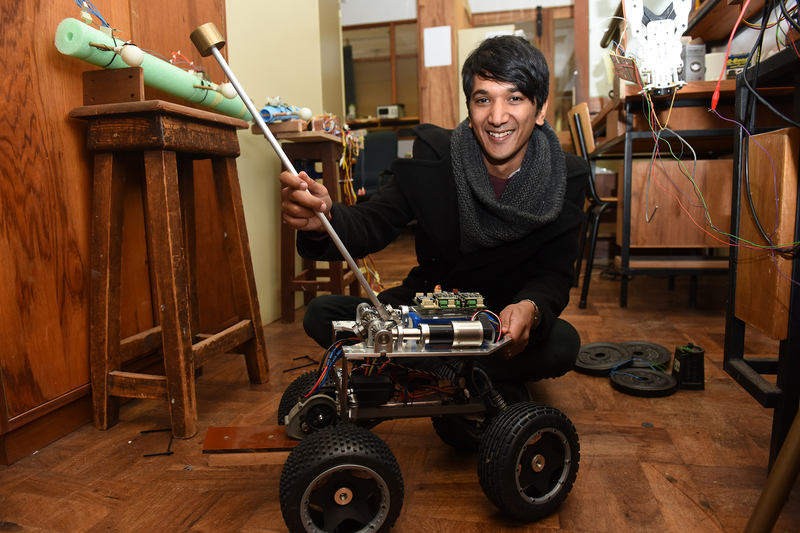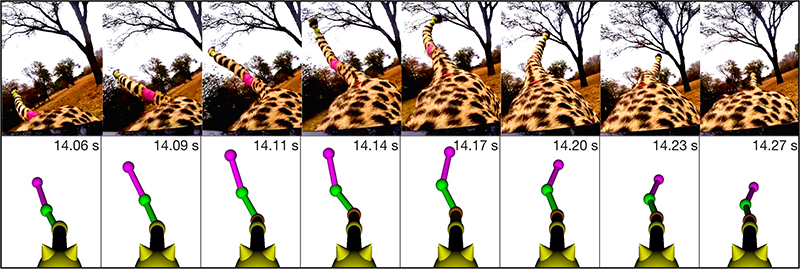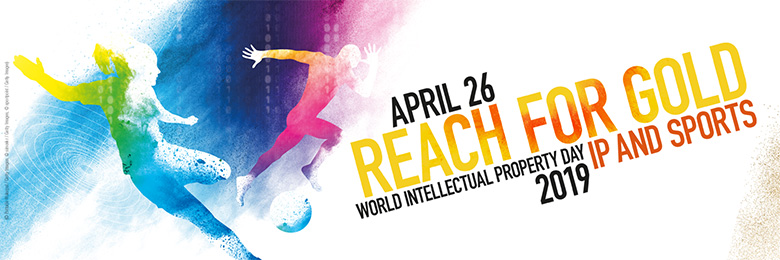What the scientist learned from the cheetah’s tail
26 April 2019 | Story Ambre Nicolson. Read time 10 min.
Dr Amir Patel, a senior lecturer from the University of Cape Town (UCT) Department of Electrical Engineering, first started investigating the properties of cheetahs’ tails in relation to robotics. Little did he know that his research would result in a whole new way of capturing the movement of the human body.
Dr Amir Patel first became interested in tails after he chose to build robots designed to move at high speeds as part of his PhD studies. Patel, who graduated with an undergraduate degree from UCT in 2008 after studying mechatronics engineering, spent several years working in the aerospace industry before returning to UCT to complete his PhD in 2015.
“At the time, I was fascinated with the notion of bio-inspiration – or learning lessons from animals evolved over millions of years and then applying those to new technologies,” says Patel.
“There were studies at the time that showed how lizards stabilised their movement when they jump using their tails. I started to wonder: if lizards used this technique, then what about an animal closer to home that moves much faster, the cheetah?”
Patel started to research the subject, but quickly found that there was not much scientific literature about it. “There was anecdotal stuff about how cheetahs’ tails increased their agility and stability by acting as rudders and counterweights – but not much about how exactly this worked,” says Patel.
“I was fascinated with the notion of bio-inspiration – or learning lessons from animals evolved over millions of years and then applying those to new technologies.”
To understand more, he decided to do his own research.
“I used three methods,” he explains. “First, I built simplified tails for two robots, Dima and Dima II (lehadima is Sesotho for ‘lightning strike’). This showed the affect of a tail on agility by replicating the movement of a cheetah’s tail.”
“Second, I developed some mathematical models that showed by computer simulation that tails stabilise movement. And third, I was fortunate to be invited to the autopsy of a cheetah, which allowed me to make some very precise measurements. That, surprisingly, had not really been done before.”
It turned out that the cheetah’s tail, while bushy-looking, is actually extremely light. “It was thought that a cheetah’s tail accounted for up to 10% of its body weight. But in fact, it is less than 2%,” explains Patel.

Patel became interested in the aerodynamic effects of cheetahs’ tails. He took some cheetah tails from the specimen collection at the National Zoological Gardens of South Africa in Pretoria and he stuck them in a wind tunnel at UCT. Patel determined that a cheetah’s tail creates significant aerodynamic drag as a means to redirect the animal’s movement in a stable way.
From aerodynamics to algorithms
The last piece of the puzzle fell into place when Patel spent time studying cheetahs at wildlife sanctuaries near Cape Town and Johannesburg.
“At first, I just mounted GoPro cameras in the cheetahs’ enclosures. But of course, although the cheetahs did amazing manoeuvres, they didn’t do them in front of the camera,” he remembers.
Next, he created a special harness with a camera facing backwards that could be comfortably attached to the animals’ backs. “This worked much better and we managed to capture how their tails moved,” says Patel. Using smartphone technology, such as accelerometers, GPS and gyroscopes, Patel was able capture a great deal of information in a short amount of time.
“It was thought that a cheetah’s tail accounted for up to 10% of its body weight. But in fact, it is less than 2%.”
“This resulted in some big datasets, but of course they were meaningless unless we had a way of processing them,” says Patel. Once again, he relied on his own resourcefulness to write an algorithm that combined these disparate kinds of information and resulted in a coherent model of the skeletal movement of a cheetah, including its spine and tail.
A new way to capture human movement
“While discussing our invention with Saberi Marais of UCT’s Research Contracts and Innovation (RC&I) we realised that this way of capturing movement could also be applied to the human body,” says Patel.
Marais introduced Patel to scientists at the UCT Sports Science Institute who were keen to collaborate on the project. “Up until now, if a sports scientist wanted to study the movement of an athlete, for example, they would have had to do it on-site, in a custom setting, using motion-capture cameras,” explains Patel. This is often expensive and impractical.
With seed funding from RC&I, Patel and his team began to adapt their cheetah sensors to make them suitable for use on humans.
“In essence, we have created a system of multiple sensors that are light-weight and economical, but can capture the movement of the human body very precisely.
“Using a dozen such sensors attached to different parts of the body, I believe we can capture a very complex and nuanced picture of its movement – and we can do it remotely,” says Patel.
“Using a dozen such sensors attached to different parts of the body, I believe we can capture a very complex and nuanced picture of its movement – and we can do it remotely.”
Doctor Yumna Albertus, one of the sports scientists who worked with Patel on his research, believes that his technology will allow scientists the freedom of measuring human biomechanics in real-world settings rather than in confining spaces of the biomechanics laboratories.
“We’re now able to expand our research questions that were limited purely based on the inability to measure human movement on various terrains,” she says. “With this avenue opening, our research will be more applicable in areas of human performance and disabilities.”
Patent protection has been sought for this invention, which promises to have a wide array of applications from sports scientists analysing the movement of professional athletes to doctors gauging the effects of a stroke on a patient’s movement.
Did Patel have any inkling that what started as a means to stabilise robots would result in a revolutionary means to track human movement?
“I had no idea,” says Patel. “But, I think, if you’re willing to continue to ask questions, willing to learn from nature and collaborate in a multi-disciplinary manner, your curiosity can be rewarded in all sorts of unexpected ways.”
World Intellectual Property Day

This intellectual property (IP) features as part of UCT’s World IP Day celebrations. Established in 2000 by the World Intellectual Property Organization, the day aims to celebrate innovation and raise awareness about the profound effect patents, copyright and trademarks have on our daily lives. Locally, the initiative is driven by the Department of Science and Technology’s National Intellectual Property Management Office.
 This work is licensed under a Creative Commons Attribution-NoDerivatives 4.0 International License.
This work is licensed under a Creative Commons Attribution-NoDerivatives 4.0 International License.
Please view the republishing articles page for more information.










